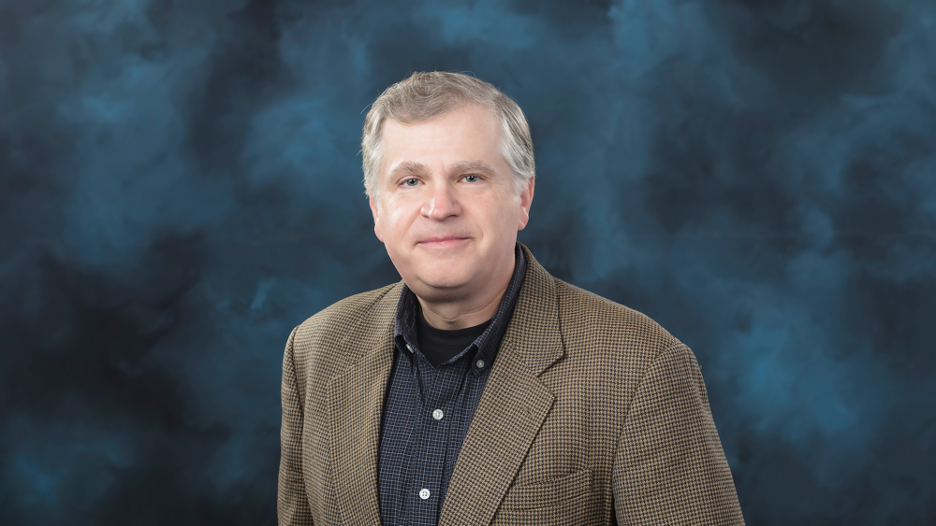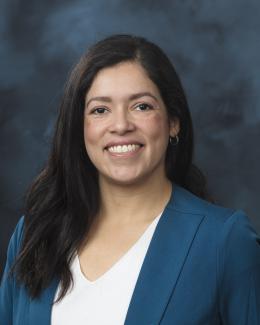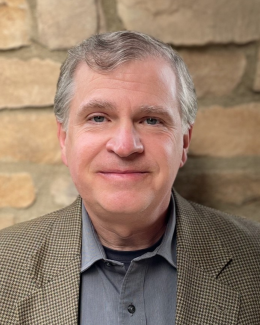
When virtually unlimited energy from fusion becomes a reality on Earth, Phil Snyder and his team will have had a hand in making it happen.
Snyder, a theoretical and computational physicist, was recently appointed Oak Ridge National Laboratory’s interim director of the Fusion Energy Division in the Fusion and Fission Energy and Science Directorate. He is an award-winning scholar and researcher helping solve the world’s energy challenges through physics. Prior to his current role, Snyder served for two years as the ORNL’s Burning Plasmas Foundations section head, where he led a group of more than 50 researchers who are helping fusion energy devices around the world succeed.
Snyder and his team study fusion, the process that powers the sun and stars, with the goal of bringing a carbon-free and inexhaustible energy source to Earth. Scientists are exploring various methods to create fusion energy using large magnets in machines called tokamaks and stellarators. One method focuses on confining plasma — the hot, charged state of matter composed of free electrons and atomic nuclei — and heating it to more than 100 million degrees.
“We are working to address all of the key scientific issues critical to fusion’s success,” Snyder said. “We do theoretical, computational and experimental plasma physics, and we also study the interaction of the hot plasma with the material surfaces, called the plasma-surface interaction.”
His research focuses on electromagnetic plasma turbulence and the dynamics of the edge region of fusion plasmas. He developed a predictive model of the edge transport barrier, or EPED, to predict and optimize the performance of fusion energy devices.
But he cannot bring fusion down to Earth alone. Theorists, computational scientists and experimentalists must join forces in fusion research, he said.
“We’re working together to develop a more comprehensive understanding of the whole fusion system, not just one aspect,” Snyder said. “Theorists must work closely with experimentalists to validate and strengthen our models. At ORNL, we collaborate on experiments and develop diagnostics for several tokamaks and stellarators worldwide, enabling us to test our understanding in a wide variety of conditions.”
He added, “I try to guide people toward the missing links in the areas of research where we need to improve our understanding the most. We will have a strong impact on the overall system's performance if we can do this.”
One thought inspires Snyder in his work: Fusion is a world-altering technology that could help solve significant energy challenges for future generations.
“That’s why I got into the field,” he said, adding that it’s a powerful motivation for anyone looking for research direction. The world’s largest fusion device, ITER, is being built in France, and ORNL’s fusion energy team is a major contributor to its progress, he said.
“This is an important aspect of what we do. One key aspect to making ITER successful is avoiding or mitigating disruptions, where you can potentially lose all the energy in the plasma. We study the physics of disruptions and develop ways to avoid or mitigate them to facilitate long duration high fusion performance operation of ITER.”
Snyder spent more than two decades at General Atomics in San Diego doing research with its magnetic fusion device, DIII-D, a Department of Energy Office of Science user facility. At GA, Snyder most recently served as director of the Theory and Computational Science department before joining ORNL.
Originally from Ohio, Snyder moved with his wife from San Diego to Oak Ridge in 2021. The couple has two children. East Tennessee suits them well, Snyder said. They enjoy hiking in the Great Smoky Mountains and are trying to visit all the waterfalls they can.
Snyder received his bachelor’s degree in computational physics from Yale University, and a doctorate in plasma physics from Princeton University.
He has earned many awards and honors. In December 2022, Snyder was named an ORNL Corporate Fellow in recognition of his significant career accomplishments and continued leadership in his field. The Corporate Fellow designation recognizes outstanding contributions to the scientific community as an exceptional and influential researcher and as a role model and mentor among peers and early career researchers.
Snyder has published more than 200 peer-reviewed journal articles, including five first-author papers that received special recognition from journals. He is among the top-cited authors of papers in fusion plasma physics. He is a fellow of the American Physical Society, or APS, and a recipient of the Rosenbluth Award for Fusion Theory, the APS Dawson Award for Excellence in Plasma Physics Research and the IAEA Nuclear Fusion Prize. He was a member of the U.S. National Academies of Sciences Committees on a Strategic Plan for U.S. Burning Plasma Research, as well as the Key Goals and Innovations Needed for a U.S. Pilot Plant. Snyder is helping the DOE determine a path forward for the nation’s fusion energy research.
Building a fusion pilot plant, Snyder said, is central to realizing fusion as an energy source on Earth. Essential facilities such as the Materials Plasma Exposure eXperiment, or MPEX, are already under construction at ORNL, and Oak Ridge could also host future facilities. “This is a terrific place for it,” he said. “We have plenty of space, water, affordable electricity, a lot of local expertise and great resources.”
UT-Battelle manages ORNL for the Department of Energy’s Office of Science, the single largest supporter of basic research in the physical sciences in the United States. The Office of Science is working to address some of the most pressing challenges of our time. For more information, please visit energy.gov/science. — Lawrence Bernard



